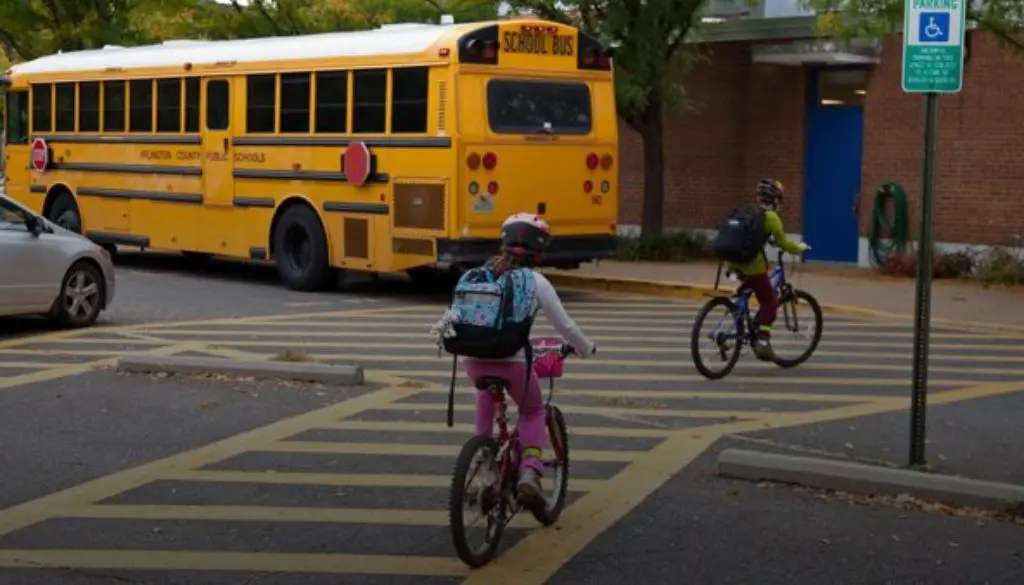COVID-19 Remains Top Safety Concern for Upcoming School Year
Many students, teachers, principals and staff are now back on campus after months of either being remote or splitting their time between school and home.
In-person learning has resumed in school districts across the country as they wrap up the remaining weeks of the 2020–2021 academic year. But questions about the 2021–2022 academic year are beginning to surface. What will school look like next year? What are the major safety concerns? What actions can be done to alleviate and resolve them?For some school leaders, they’ve already identified their major safety concern for the upcoming school year — the coronavirus.
COVID-19-related safety measures ranked as the highest issue, with 71% of survey respondents reporting they will continue with social distancing, personal protective equipment and other steps, according to Rave Mobile Safety’s 2021 Crisis Communication and Safety in Education Survey: Concerns, Challenges & Planning for the 2021–2022 School Year (Education Survey). Approximately 300 K–12 employees, including those who work in administration, emergency management, and safety and security, were recently asked about their chief safety concerns, ways these concerns would be addressed, and the types of communication methods these employees would use.
These survey respondents anticipate their schools will implement other actions, including:
- 56% expect more investment in COVID-related safety resources.
- 56% will conduct daily health and symptom checks for staff.
- 52% will administer daily health and symptoms checks for students.
There is some optimism going into the new school year with vaccination efforts ramping up and eligibility now including ages 16 and older. Yet uncertainly remains for some schools to return to full-time, in-person learning.
According to the Education Survey, 42% of respondents anticipate their schools will have a combination of online and in-person learning. Other findings include:
- 24% will be completely hold in-person learning for the entire school year.
- 24% will start with in-person learning, with an option to move partially or completely online.
- 20% will begin with online classes, with an option to move partially or completely online.
- 18% will remain online only for the entire school year.
- 14% haven’t decided yet.
For school districts that will hold full-time, in-person learning, administrators will need to plan for all kinds of scenarios as they continue to wrestle with COVID-19’s impact. Various reports suggest administrators will have staggered start times to reduce the number of students in school buildings at the same time. Other school leaders anticipate bus and class schedules will be adjusted to accommodate guidelines.
COVID-19’s Impact on Student Mental Health
The true impact of the pandemic on K–12 students’ mental health likely won’t be known for years, according to experts. Yet there are some initial reports about the pandemic’s effect on children and adolescents.
- 90% of school districts reported higher rates of student absenteeism or disengagement.
- Over 60% of children ages 7 to 15 had clinically significant symptoms of anxiety and depression.
- 46% of parents of teens saw signs of a new or worsening mental health condition in their children since the pandemic began.
School closures, remote learning and social isolation are taking a toll on children and adolescents. Some of their parents experienced job and income loss, creating financial hardship and increasing stress. Family members either had or died from COVID-19. And these factors are all expected to continue to affect the mental health of K–12 students — a major concern for school leaders.
The Education Survey found 60% of respondents are concerned about student mental health in the upcoming school year. Some respondents, for example, were worried about how students would transition back to the classroom after learning remotely for a year. Other respondents were concerned if students would return to school at all.
Staying Informed and Engaged During the 2021–2022 School Year
Administrators across 13,000 school districts will be navigating through a myriad of concerns, especially COVID-19 as they continue to implement social distancing and other protective measures. They will also need to provide comfort and assist some students who may experience mental health issues.
The coming academic year will continue to bring added complexities, so it will be imperative for the entire school community to stay informed. And if some districts decide to have various learning settings, it will bring more challenges to ensure students, parents, superintendents, principals, teachers, school resource officers and staff are informed and updated about everyday matters to emergencies.
Communication challenges did occur in the 2020–2021 academic year, with 26% of Education Survey respondents reporting there was issues reaching and notifying students and/or parents.
The Rave critical communication and collaboration platform would enable school leaders and staff to bolster the information flow and facilitate faster response efforts. They would be able to maintain continuity of operations, whether their school or district is providing in-person, online or hybrid classes. The platform includes:
- Recurring and automated health checks allows administrators to send messages to parents with details about their child’s health and wellness status. Administrators can also send messages to staff members to find out their health and wellness status.
- A one-click mobile panic button application instantly connects to 9-1-1, first responders and necessary personnel simultaneously. It provides a 9-1-1 team with critical response data, including the type of emergency, location, key contact information and facility layout, when the app is activated. The application also automatically triggers mass notifications, digital signage and more.
- Internal staff communication enables authorized staff to inform the necessary personnel about student needs, minor medical incidents, administrative updates and other issues to specific groups without calling 9-1-1.
- Multichannel notification shares resources with parents, students and staff in their preferred language and communication method — email, voice and text.
- Quick alerts instantly launch messages to staff, students and parents from prestored templates. Administrators can also send messages through voice, email or text, while simultaneously posting outgoing messages to a school’s Twitter account and Facebook page.




